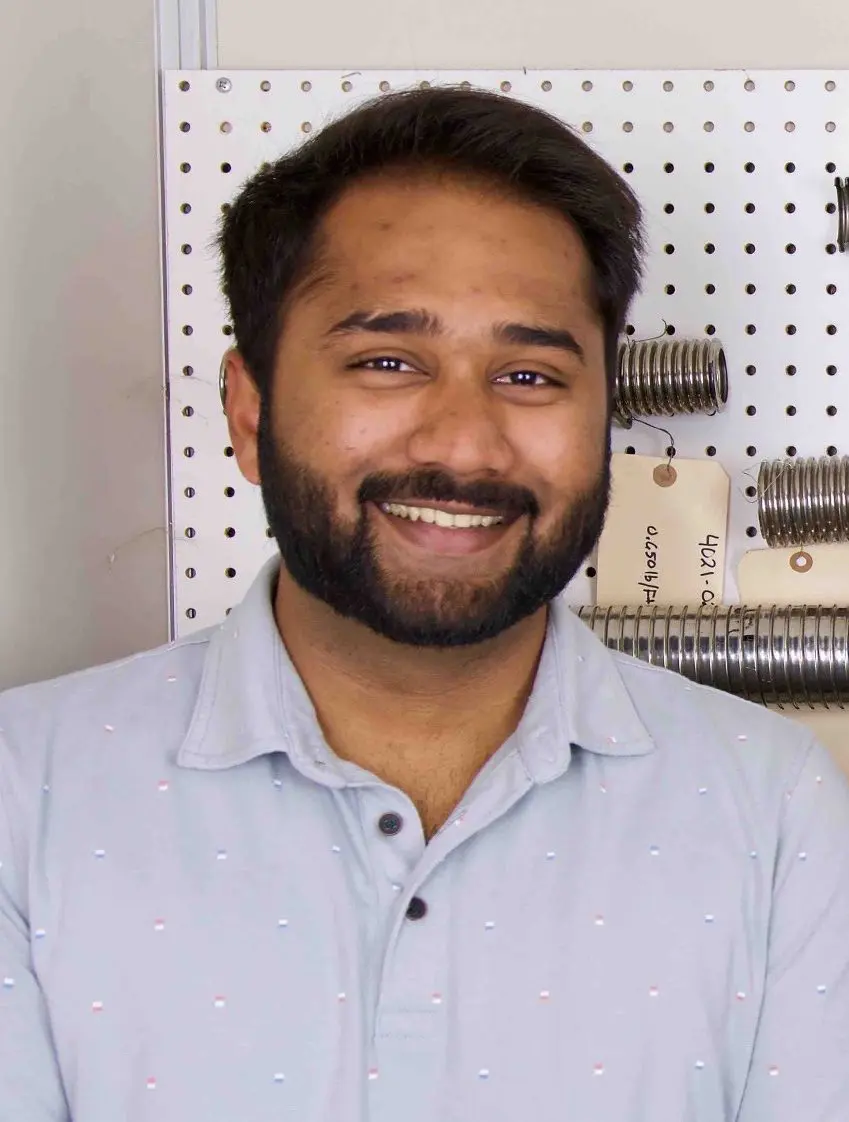CSA Features Young Professional Ronit Patil
We are very excited to share that Ronit Patil, Penflex sales engineer, has been featured in the Cryogenic Society of America’s Cold Facts magazine as an “outstanding young professional” in the cryogenics space. This recognition is bestowed upon those who show promise of making a difference in their fields.
Please find the feature below.
The Next Generation in Cryogenics and Superconductivity
My educational and professional background: I have a master’s degree in Mechanical Engineering from Drexel University in Philadelphia and a Bachelor of Engineering in Mechanical Engineering from the University of Mumbai.
How I got into cryogenics: I got into cryogenics when we decided to enhance our offering to customers. Our company, Penflex, works with compressed gases and cryogenic liquids, like liquid helium, and has strict leak testing and cleanliness requirements. We wanted to provide a comprehensive report of testing and cleaning that had been carried out on the hoses our customers were purchasing, so we brought these processes in-house. While there certainly were design requirements that I had adhered to in building hoses for cryogenic applications previously, I would consider the time spent researching, testing and learning about leak testing and cleanliness standards for cryogenic service to be when I truly entered the field.
My current company/position: I am a sales engineer at Penflex Corporation in Gilbertsville, Pa. I look after our customers in the Northeast, many of whom are involved in the cryogenics space.
My mentor(s) and my experience with them: I would say that someone who shares my attention to detail, and perhaps even exceeds me in his desire for exactitude, is Dave Gregor, Penflex’s Level II non-destructive examiner. Dave is also our certified welding instructor and examiner and has great experience in teaching people new processes and committing those processes to paper. He was my guide for developing the specifications that would govern the use of the helium mass spectrometer we purchased, as well as those which would ensure we meet our customers’ cleanliness requirements. Penflex now has an in-house standard for hoses that have a requirement of helium mass spectrometry testing. I’m happy to report that these documents have been useful in training newcomers and ensuring consistency across our cryogenic products.
Some of my contributions to the cryogenic field: I think bringing cryogenic leak testing and cleaning in-house is a contribution to the cryogenic field. In doing so, we have added another informed supplier to the list of those offering these important services. For instance, some of our cryogenic hoses are used to move liquid helium through MRI machines, and contaminants in the hoses could impact the level of superconductivity needed for the machines to run properly. Bringing things into a tighter focus, I think the investment in our mass spectrometer and learning more about preparing hoses for cryogenic service is a value-add for our customers. We can now, with more confidence than ever before, provide an accurate representation of what has been done.

What are the most important developments in cryogenics? Power generation is a key market for Penflex, so I’m quite familiar with it. I think the way cryogenic technologies have helped to diversify usable energy sources is significant. Just think of LNG’s trajectory over the last century. Not only did cryogenics enable the development of large-scale liquefaction processes, but it also fueled advances in storage and transfer that allowed for its commercialization. The “cleanest burning” fossil fuel is now a mainstay in supplying electricity needs around the world.
The kinds of products I work on support this supply chain. Our hoses and expansion joints are made using the 300 series austenitic steels, often termed “cryogenic steels” because, by design, they will not become brittle and crack at low temperatures. Most other materials will. Liquified natural gas is just one example of how cryogenics has helped this industry evolve. Liquid air could soon become the newest renewable energy to make headlines, and the list goes on. Our job as a supplier to businesses pushing the field of cryogenics forward is to keep current on developments and recognize how advancements in metallurgy, welding and testing could deliver a better product. At times, customers come to us with prototyping requests, and I always enjoy those kinds of opportunities.
What advances do you hope to see in the future? The field of quantum computing is fascinating, and I think, while it may still be a few years out, we’ll be seeing some major developments in this arena before too long. I’d love to see whether there’s an overlap between such cutting edge technology and the work we do. Perhaps the refrigeration systems needed to support the computers’ operation are an opportunity—something to keep an eye on!
Where can readers find out more about your projects? Penflex Cryogenic Transfer Hoses (with videos featuring Dave Gregor and myself): https://www.penflex.com/products/hose-assemblies/cryogenic-hoses/, Penflex (General Resources): www.penflex.com, and LinkedIn: www.linkedin.com/company/7237893.
This article originally ran in Cold Facts, The Magazine of the Cryogenic Society of America, Inc. Volume 38, Number 3, 2022.
About Penflex
Founded in 1902, Penflex is an ISO 9001-certified manufacturer of flexible metal piping solutions, offering a broad range of metal hose, braid, bellows and expansion joint products along with complementary services, including sales and welder training, engineering support, prototyping, testing and contract braiding. Known for quality and durability, our products are sold into multiple, unsynchronized vertical markets all over the world. Based in Gilbertsville, PA, Penflex maintains a warehouse in Houston, TX and operates a second manufacturing facility in Ho Chi Minh City, Vietnam.
More Articles
New Clean ID hose Streamlines the semiconductor supply chain
February 11, 2025
Penflex Receives CRN Approval for Metal Hose Assemblies Used in Turnaround Projects
October 29, 2024
Technology Advances Yield Clean ID Hose
May 29, 2024